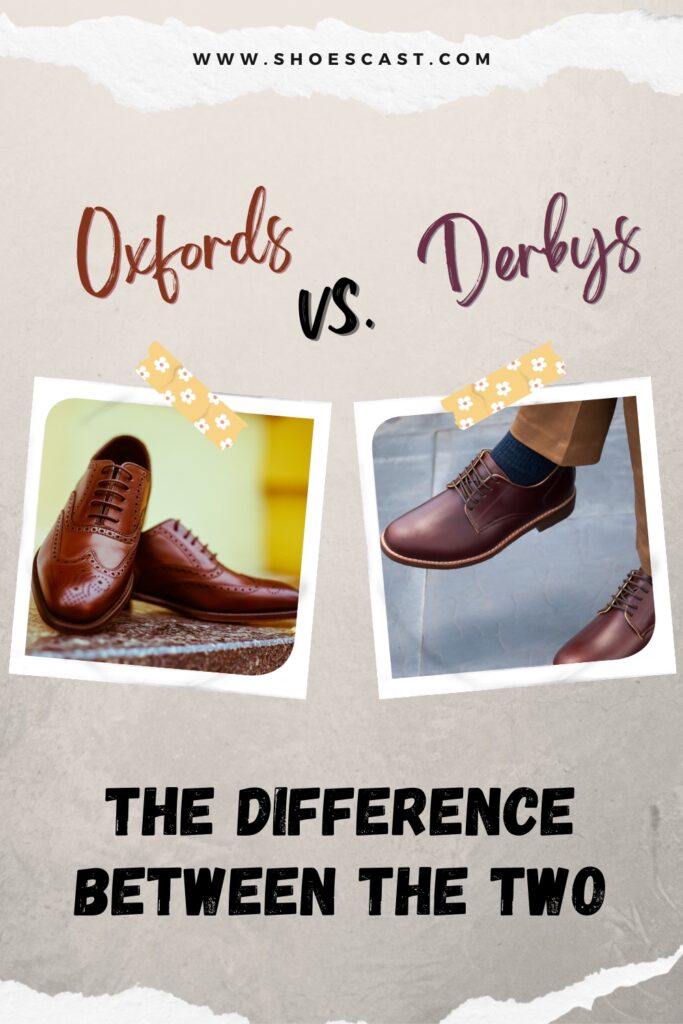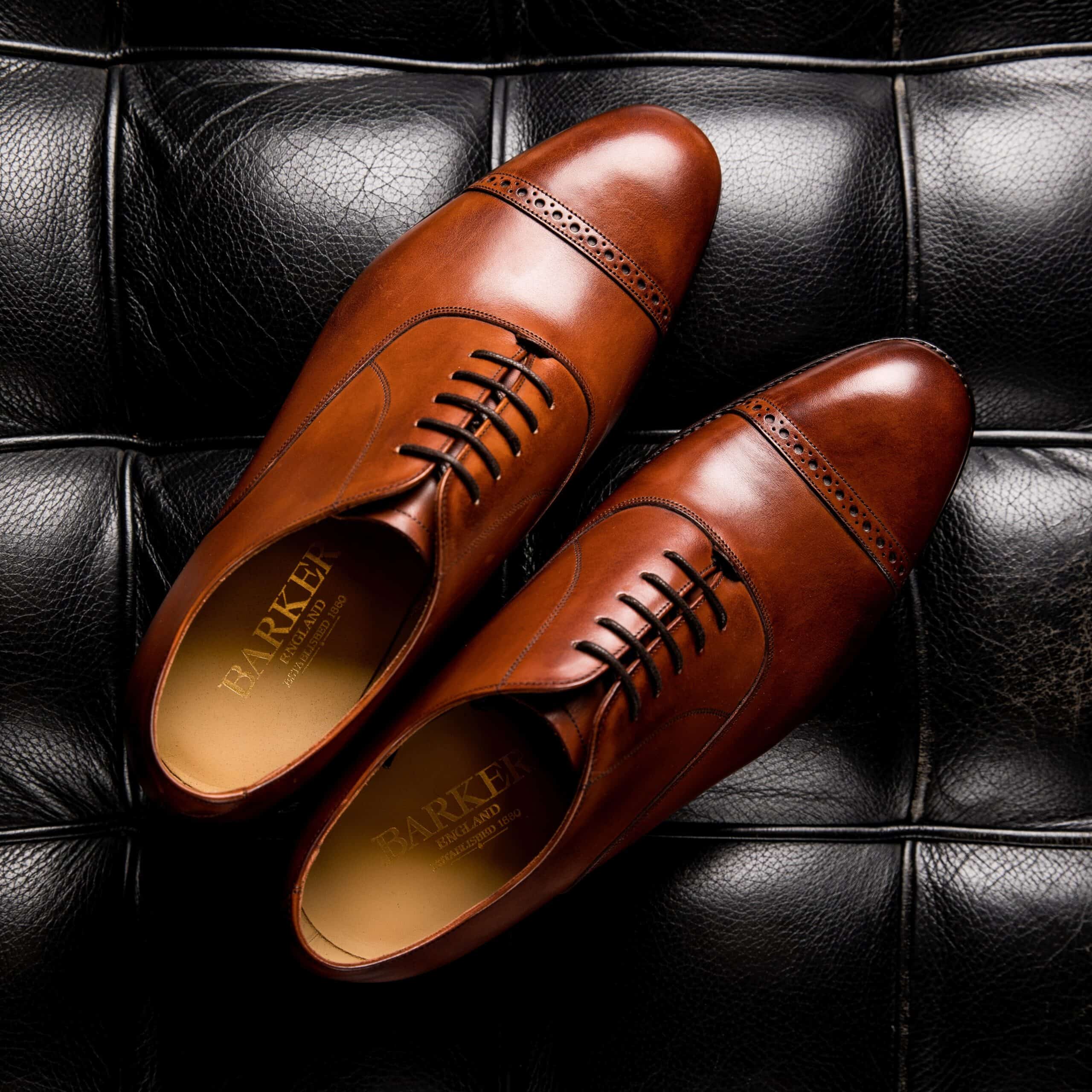Oxfords vs. Derbys, who would’ve thought you would ever have to choose between the two? When you’re searching for a suave and sophisticated wardrobe must-have, you know that you need to go with one of these. How do you choose when you’re a fan of both, though?
We’re kidding, we’re kidding. We know that the two famous footwear options confuse most fashionistas because they’re pretty similar.
We know that nobody struggles with choosing between the two because everybody thinks they’re the same. More often than not, men who wear Derbys believe they’re wearing Oxfords (and vice versa).
But, but, but… There’s always a but when we’re talking about the type of footwear that’s appropriate for one occasion but not for another.
Although that might sound strange, Oxfords and Derbys aren’t appropriate for the same occasions. One is considered an institution of formalwear while the other is seen as the staple of off-duty style, the relaxed option you turn to when you don’t want to put on a pair of wingtips.
Now, you would have to be a peculiar type of menswear enthusiast to understand what we’re talking about without reading everything we’ve gathered for you down below.
Without further ado, here’s what you need to know about Oxfords vs. Derbys before mistakenly wearing the wrong footwear to an event, a business meeting, or a night out.
What’s an Oxford shoe?
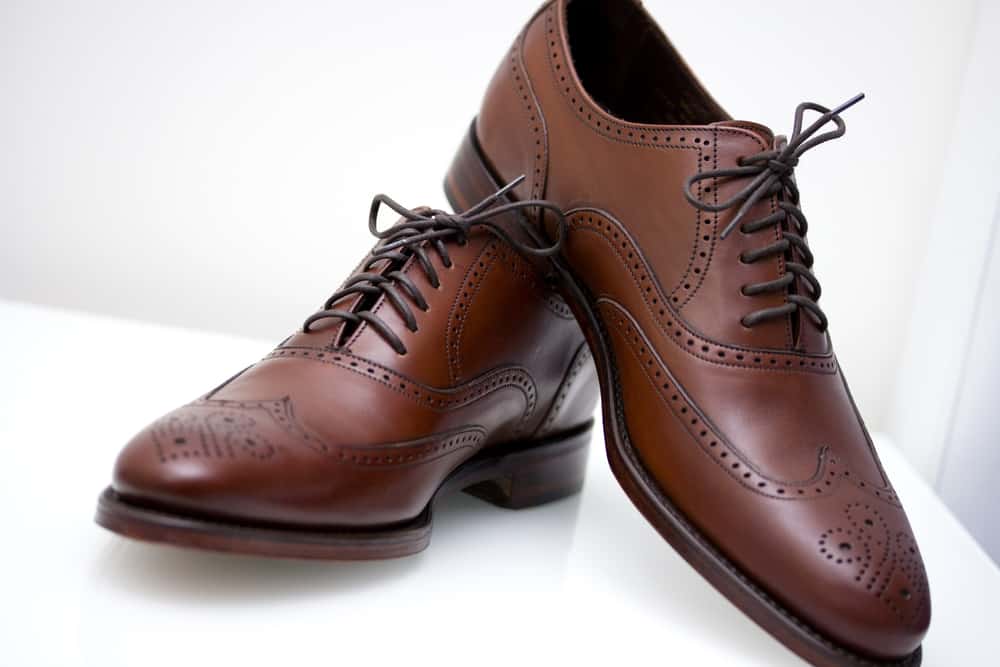
Right off the bat, Oxfords are a wardrobe must-have for men who attend business meetings, events, and other occasions which require them to dress smart.
Rather than wearing a simple, subdued shoe, men who wear Oxfords want to show off the fashion knowledge they’ve got (when we’re talking about formalwear, at least).
Now, the history behind Oxfords tends to be confusing because there are (at least) two conflicting stories of how Oxfords became popular. On one hand, some stories suggest that the Oxfords we now know and adore became known as boots around the 1600s at Balmoral Castle, Scotland.
Oxford boots became court footwear and everyone who worked at the court wore them. Over the course of a few centuries, everyone’s favorite boots underwent a bunch of changes that made them more similar to the Oxford shoes we know and adore.
On the other hand, some stories suggest that the style became known as Oxfords because of the city’s university students who wore a version of Oxfords during the 1800s out of protest.
Now, the students were pretty much fed up with the restrictive, knee-high boots they were required to wear during their classes. Needless to say, the students rebelled and started wearing Oxonian boots.
Oxonian boots were equipped with narrow slits across the sides of the boots that made them much more comfortable and sent the much-needed message of change and rebellion (to whoever needed to act and react at the time). Oxonian boots changed over time and the slits were swapped out with laces.
Other than that, the heels of the boots were lowered, and the height of the boots was lowered, too. Soon enough, Oxonian boots weren’t boots anymore. Nowadays, Oxfords are characterized by a closed lacing system, lower heels, exposed ankles, and stitched leather soles (among other things).
What’s a Derby shoe?
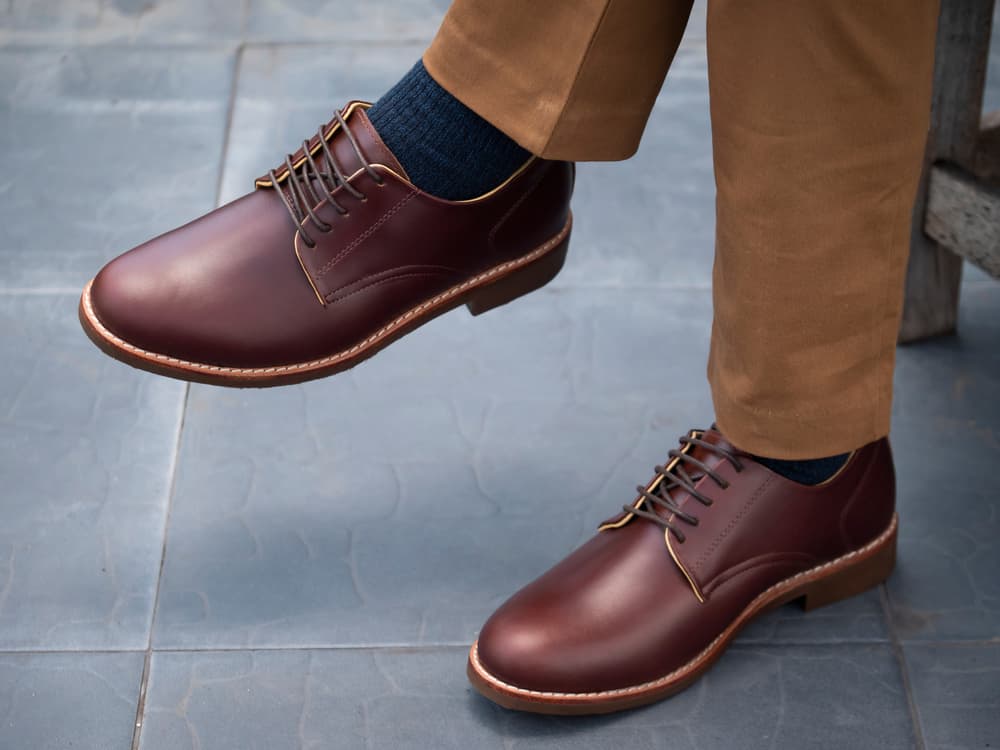
When we’re discussing Oxfords vs. Derbys and referring back to the history behind each, we have to argue that Derbys are winning.
Derbys are pretty much synonymous with sneakers for men who prefer wearing something relaxed and easy-going but want to appear polished and put-together at the same time.
The history behind Derbys happens to be even more confusing than the history behind Oxfords. It turns out that Derbys have three confronting stories that talk about how they became popular.
First and foremost, one of the stories suggests that Derbys originated around the 19th century as gentlemen’s hunting shoes. Derbys were hardwearing, comfortable, and protective enough to withstand the rough conditions, and they were attractive enough for gentlemen to wear out and about.
On the other hand, one of the other stories suggests that Derbys became popular because of the Prussian Field Marshal Gebhard Leberecht von Blücher, during the Napoleonic wars.
He, apparently, wasn’t a fan of the rugged, cumbersome boots that the troops had to wear and he ordered something a little more lightweight, breathable, and comfortable. He, then, came up with “Bluchers” which were ankle high and equipped with a tongue and a lacing system.
Finally, we can’t forget about the third story which suggests that Derbys came as an alternative footwear option for the 14th Earl of Derby, a rather wide man, who couldn’t get the average footwear to fit whatsoever.
Actually, he ordered the shoemakers to create shoes with a lacing system that would accommodate the wide, stubby legs he was working with. After that, Derbys went through a few changes before becoming what they are today.
Today, Derby shoes feature an unfastened, unlatched lacing system (unlike Oxfords), a tongue and two quarters, an elongated or rounded toe, and stitched leather soles.
Oxfords vs. Derbys: What’s the difference between the two?
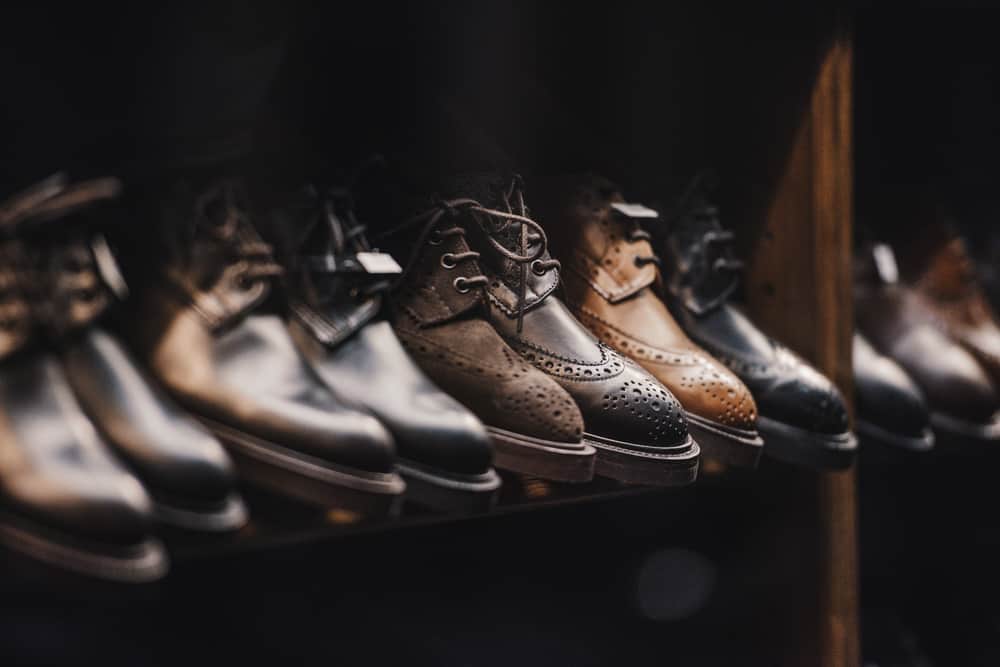
Now that we know that Oxfords and Derbys aren’t the same, we can proceed to discuss what makes them different from one another. From the lacing systems, the tongues, and the quarters, to the insteps and the occasions they’re appropriate for, here’s everything you need to know.
1. The lacing
We know that the two popular footwear must-haves appear the same to an untrained eye, but they’re quite different when you pay attention to the details. For starters, Oxfords and Derbys have different lacing systems.
Oxfords are equipped with a fastened, latched lacing system and eyelets that are stitched under the quarters. Derbys, on the other hand, are equipped with an unfastened, unlathed lacing system and eyelets stitched on top of the quarters (the quarters, for those of you who don’t know, are the back parts of the upper).
The quarters also happen to be one of the differences between Oxfords and Derbys, too.
2. The quarters
When we’re talking about the quarters on the Oxford shoes, both the interior and the exterior quarters are stitched underneath the vamp.
But, when we’re talking about Derby shoes, both quarters are stitched on top of the vamp. Now, what’s a vamp?!
Don’t worry, for those of you who aren’t shoemakers, the vamp’s pretty much the area where the top of the shoe ends on the top of your foot.
And, Derbys are typically wider and roomier because of the fact that the quarters are stitched on top of the shoe rather than underneath the vamp – and they make for an attractive embellishment.
3. The tongue

Who would’ve thought that the tongue would play a part when we’re talking about Oxfords vs. Derbys? But, we’re here and we’re ready to break down the significance of the tongue.
On one hand, Oxfords feature a tongue that’s separated from the vamp (meaning, the tongue’s stitched underneath the vamp).
Oxfords achieve that simple, sleek appearance because everything’s stitched underneath the vamp rather than on top.
On the other hand, Derbys don’t have a separate tongue – the tongue appears to be an extension of the vamp which means that Derbys consists of three specific pieces, a vamp with the tongue and two quarters.
4. The instep
Oh, you wouldn’t believe the difference that the instep makes when we’re talking about Oxfords and Derbys! When we’re discussing the differences between two super, super similar footwear must-haves, we’re bound to focus on the details.
Whether you’re searching for an elegant, sleek shoe or a relaxed, chunky shoe, you might want to choose between the two with caution.
Oxfords feature a form-fitting instep with an elongated toe that makes them appear more formal. Derbys feature a roomy instep with a rounded toe that makes them appear more casual. And, the difference in insteps brings us to the final distinction between the two.
5. The occasion
Due to a million, fashion-forward reasons, Oxford shoes are considered more formal than Derbys. Because of the sleek structure, simple stitching, and the design that makes them appear like they were made with one piece of leather, Oxfords are great for events, business meetings, and formal outings.
Derbys are known for their embellished design which makes them more casual and informal. Derbys are more appropriate for everyday wear, especially when combined with chinos, denim bottoms, and relaxed suits. Derbys aren’t considered appropriate for black-tie affairs.
Oxfords vs. Derbys: Which ones are better for you?
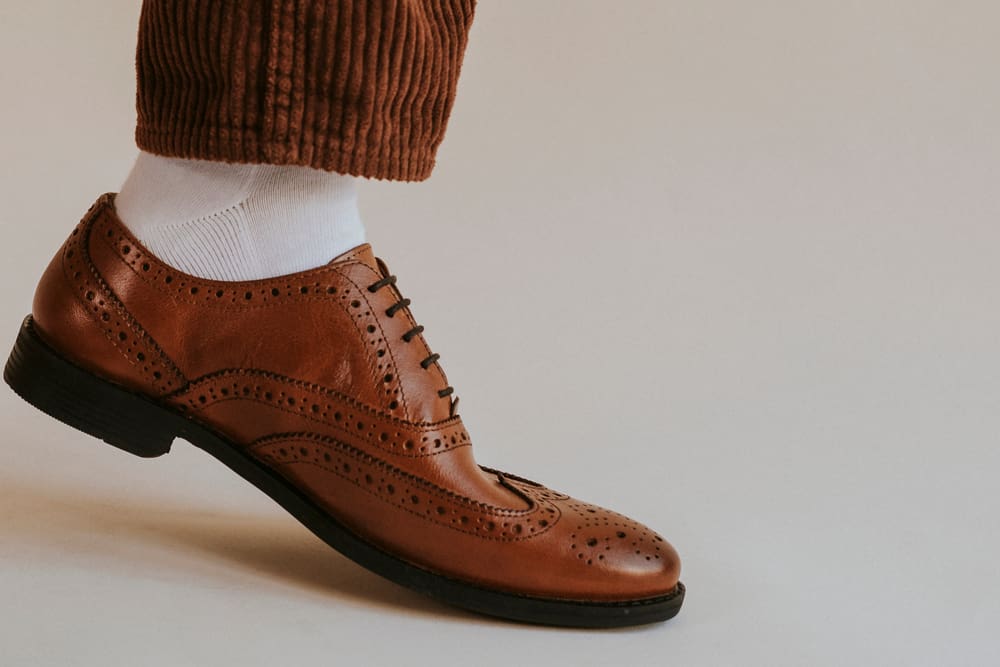
Argh, the age-old question of who wins the Oxfords vs. Derbys battle!
Turns out that there’s no winner when we’re talking about two footwear must-haves that deserve to be praised for different qualities. To argue that you need both of them would be an understatement, but that’s the truth – both Oxfords and Debys deserve the title of a wardrobe staple.
Whether you go with the sleek, subdued Beckett Simonon Valencia whole-cut shoes or the effortless, timeless Beckett Simonon Anders split-toe derbies, you’re guaranteed to turn heads and demand attention wherever you go.
With that out of the way, there’s only one winner of the Oxfords vs. Derbys battle, and that winner happens to be you.
Read more: The 12 Best Shoes For Pilots To Get You Takeoff-Ready
